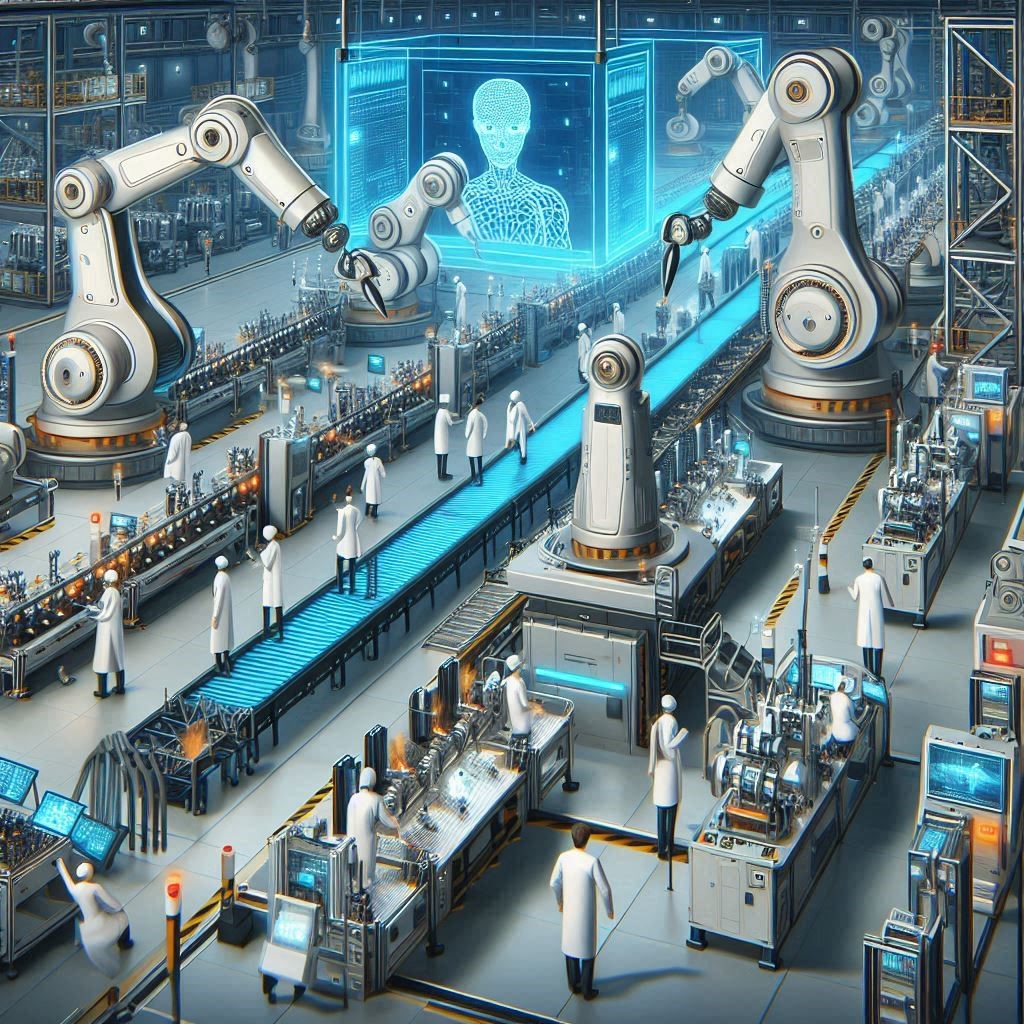The retail landscape is undergoing a profound transformation as automation technologies gain traction. Retail automation encompasses a broad range of tools and processes that streamline operations, enhance customer experiences, and improve overall efficiency. This article explores the key trends shaping the global retail automation industry, highlighting the technologies and strategies driving change.
The global retail automation market size is expected to be valued at USD 27.6 billion in 2024 and is projected to reach USD 44.3 billion by 2029; it is expected to grow at a CAGR of 9.9% from 2024 to 2029. The market is experiencing growth driven by the increasing adoption of integrated automated technology by e-commerce warehouses. However, challenges such as growing cybersecurity threats with the adoption of automation technology hinder market growth. Despite these hurdles, opportunities emerge from the enhanced retail experience for customers by leveraging automation technologies.
Rise of Artificial Intelligence and Machine Learning
Artificial intelligence (AI) and machine learning (ML) are revolutionizing retail automation. Retailers are leveraging AI to analyze consumer behavior, predict trends, and personalize shopping experiences. AI-powered chatbots provide 24/7 customer support, while recommendation engines suggest products based on past purchases and browsing history.
Machine learning algorithms also optimize inventory management, helping retailers anticipate demand and reduce excess stock. By analyzing data from multiple sources, these technologies enhance decision-making and operational efficiency, ultimately leading to improved customer satisfaction.
Growth of E-Commerce and Omnichannel Solutions
The shift toward e-commerce has accelerated the adoption of retail automation technologies. Consumers increasingly expect seamless shopping experiences across online and offline channels. As a result, retailers are investing in omnichannel solutions that integrate various sales platforms, ensuring consistency in branding, pricing, and inventory.
Automated systems help synchronize stock levels across channels, allowing retailers to fulfill online orders efficiently while maintaining in-store availability. This integration not only boosts sales but also enhances customer loyalty by providing a cohesive shopping experience.
Self-Service Technologies
Self-service technologies are gaining popularity in retail environments, enabling customers to take control of their shopping experience. Self-checkout kiosks, mobile payment options, and interactive displays allow customers to complete transactions at their convenience, reducing wait times and enhancing satisfaction.
These technologies also free up staff to focus on more complex customer interactions, improving overall service quality. As consumers become more accustomed to self-service options, retailers are increasingly adopting these solutions to meet evolving expectations.
Automation in Supply Chain and Inventory Management
Efficient supply chain management is crucial for retailers looking to optimize operations. Automation technologies, including robotics and AI-driven analytics, are streamlining inventory management processes. Automated warehouses and fulfillment centers are becoming standard, enabling faster order processing and reducing operational costs.
Robotic process automation (RPA) is also being used to manage repetitive tasks, such as order processing and invoicing. By automating these functions, retailers can minimize human error and improve accuracy, leading to a more efficient supply chain.
Enhanced Data Analytics
Data-driven decision-making is essential in today’s retail environment. Advanced analytics tools provide retailers with insights into customer behavior, market trends, and operational performance. By harnessing big data, retailers can identify opportunities for improvement and tailor their strategies accordingly.
Predictive analytics, powered by AI, enables retailers to forecast sales trends and adjust inventory levels proactively. This agility is critical for staying competitive in an ever-changing market, allowing retailers to respond swiftly to customer demands and market fluctuations.
Focus on Customer Experience
In an era where customer experience is paramount, retailers are prioritizing technologies that enhance engagement and satisfaction. Automation tools are being implemented to create personalized shopping experiences, from targeted marketing campaigns to customized product recommendations.
In-store technologies, such as augmented reality (AR) and virtual reality (VR), are also becoming more prevalent, offering immersive experiences that engage customers in new ways. These innovations not only attract consumers but also foster brand loyalty by creating memorable shopping experiences.
Download PDF Brochure @ https://www.marketsandmarkets.com/pdfdownloadNew.asp?id=1247

Sustainability and Eco-Friendly Solutions
As consumers increasingly prioritize sustainability, retailers are turning to automation solutions that align with eco-friendly practices. Automated inventory management systems help reduce waste by optimizing stock levels and minimizing overproduction.
Additionally, retailers are exploring energy-efficient technologies and sustainable packaging solutions, often aided by automated systems that track environmental impact. By embracing sustainability through automation, retailers can appeal to environmentally conscious consumers while enhancing operational efficiency.
The global retail automation industry is rapidly evolving, driven by technological advancements and changing consumer expectations. Key trends, including the rise of AI, the growth of e-commerce, and the emphasis on customer experience, are reshaping the landscape. As retailers continue to adopt automation solutions, they will not only improve operational efficiency but also create more engaging and personalized experiences for customers.
To remain competitive, retailers must stay attuned to these trends, leveraging automation technologies to enhance their strategies and meet the demands of the modern consumer. The future of retail automation is bright, with innovations poised to redefine the shopping experience for years to come.
Regional Analysis of Retail Automation Industry
